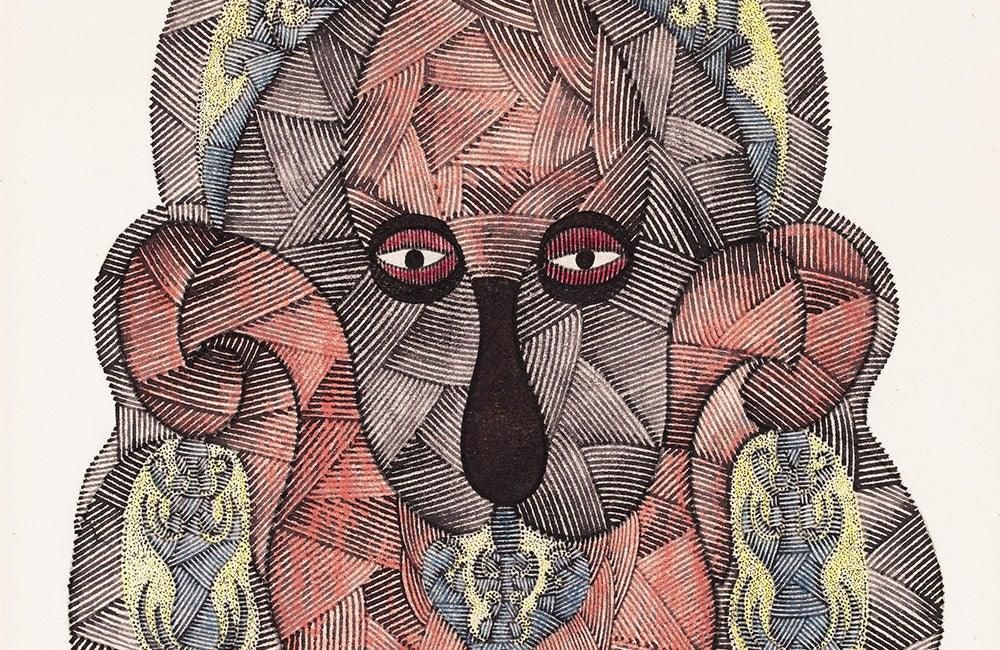First published: Spring 2016
On May 23, 1945, an ill and annoyed Douglas Duncan, leading Canadian art collector and patron, wrote to an artist whose work he championed. “I had assured you that I would see that you had the necessary money to go if you would wait until it was more convenient”, he complained. “It could hardly be less convenient for both of us than it is now”, he continued, “but I guess we might as well get it over with, seeing that patience is not one of your virtues.” Duncan’s exasperation reflected his dismay that a years-long association with an artist he had admired and promoted was coming to an abrupt end. But the “impatient” Robert “Scottie” Wilson was not for waiting, and soon sailed for Britain after 13 years in Canada.

Wilson’s career is familiar to devotees of art brut. He was born Louis Freeman in 1891, Glasgow, Scotland, to poor Lithuanian parents. At the age of nine, Louis left school and took up various jobs before joining the British Army in 1907. He served with the Cameronians in India and South Africa. In 1910 he bought himself out of the army for £18, nine of which he got back when he re-enlisted in 1916. He served on the Western Front in World War I with the Argyll and Sutherland Highlanders. After the war it seems he returned to trading in junk, before eventually moving to Canada in 1932.
It was there that he became an artist. And it was there he became a “Scottie”, as he began to go by Robert “Scottie” Wilson. By the time of his death in 1972, he was a well-known artist – Britain’s greatest “primitive” – admired by Pablo Picasso and Jean Dubuffet, commissioned to bring his designer’s imagination to Royal Worcester pottery and UNICEF Christmas cards. Few articles and obituaries failed to contrast the humble Kilburn digs of Wilson's final years with the far grander places, such as Tate Britain and the Museum of Modern Art in New York, that were now home to his art.

1932 was not Wilson’s first visit to Canada. He had traveled there in 1920, motivated by what he described as a “kick in the pants”. It is more likely that he was motivated by a desire to avoid the British Army. In February 1918, Wilson went on a fortnight’s leave and never returned. He was recorded as a deserter in September. After the war, the records show the Army’s efforts to find him. The local police in Scotland visited his mother and brother, in 1918 and again in March of 1920, only to report that both denied any knowledge of his whereabouts. It was in November of 1920 that Wilson departed for Halifax,
Nova Scotia.
Wilson sailed again for Canada in 1932, this time for a much longer, and more fateful, stay. He was still plying his trade as a junk dealer, at one point opening a small shop on Yonge Street in Toronto. It was there that Wilson experienced his version of the outsider artist epiphany. One day he picked up a fountain pen that looked like a bulldog, began to draw on a cardboard table top and scarcely stopped for the rest of his life, achieving growing renown in the years after his return to Britain. While Wilson left, many of his Canadian creations remained, located in galleries and museums all across the land, from Vancouver, British Columbia, to Charlottetown, Prince Edward Island, to Ottawa, Ontario, where the drawings displayed in this article reside at the Carleton University Art Gallery. The tale of how Wilson’s works came to be dispersed in such free-ranging fashion begins in a time when his work was reaching a growing, often appreciative, audience in Canada. It hangs on his relationship to Douglas Duncan, the extensive art collection that Duncan amassed, and what happened to it after his death.
A good place to start is the striking image from the Carleton collection: “Vision of Mrs. Barwick with Scottie jewelry.” We don’t know if Frances Barwick found the drawing flattering. We do know how instrumental she was in its going to Carleton. Frances Barwick was Douglas Duncan’s sister, and after his death in 1968 took responsibility for distributing his collection according to his wishes. Born in Michigan in 1902, Duncan was raised in Toronto, and graduated from the University of Toronto. He developed a love of the arts and trained as a book-binder. In 1936, Duncan was instrumental in starting the Picture Loan Society (PLS) in Toronto. The PLS was a place where less-known artists could exhibit their work and members (private individuals and schools) could rent or purchase pictures. Artists received a percentage of the rental fee or purchase cost. Through his work with the PLS and his own collecting of contemporary Canadian art, Douglas Duncan would become an influential figure in the Canadian art world.
This is an article extract; read the full article in Raw Vision #89




